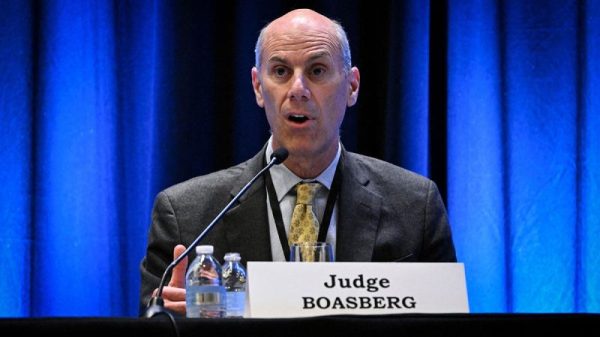When Edward Chancellor’s The Price of Time: The Real Story of Interest hit shelves in the summer of 2022, it couldn’t have been more timely. The year-over-year growth rate of the consumer price index (“inflation”) peaked at 8.9 percent the month before and spent the next year and a half dragging its way down to about 3 percent, where it’s now stubbornly lodged.
The Fed, unbelievably late to the party, had raised its interest rates about three times with another eight hikes to come; it had started to contract its balance sheet at a snail’s pace — at roughly half the pace it had expanded it during the previous two years (ignoring the COVID spring $3-trillion-in-a-few-weeks debacle).
Here is AIER’s Thomas Hogan supplementing Powell’s recent non-apology on the Fed’s performance:
Although the Fed slowed the rate of its open market purchases in December of 2021, it continued its expansionary quantitative easing (QE) program until mid-March of 2022. The FOMC raised its interest rate target range slightly in March but did not make substantial increases until May, six months after acknowledging its responsibility for high inflation… While it is true that the Fed’s actions helped bring inflation down, it is hard to give Fed officials too much credit: they solved a problem they created.
Month after month, yields on Treasury bonds and bills kept creeping up, bank rates tripled, and suddenly a generation of savers and borrowers accustomed to rock-bottom rates, below-target inflation, and free money had their world turned upside down. To ask what interest is and what it’s doing in commercial and financial society moved from an abstract academic inquiry to very real conversations at dinner tables everywhere.
The 400-page journey that Chancellor takes us on is balanced and calm, yet powerful and extremely relevant. By his own introductory remarks, the book is fueled by “a Bastiat-like conviction that ultra-low interest rates were contributing to many of our current woes, whether the collapse of productivity growth, unaffordable housing, rising inequality, the loss of market competition, or financial fragility.”
Sometimes he therefore sounds like your run-of-the-mill Marxist critic, lambasting all things financial from a deep hatred of the market process. Financialization has destabilized the American economy; banks are too large; exporting Treasuries and US dollars is the modern — monetary — equivalent of the Dutch disease, which has impoverished the worker and hollowed out American production. Then again, at low rates we all turn into idiots so it’s hard not to sympathize with at least some of those views. (It wasn’t “real capitalism,” we might say.) “Good times engender much fraud,” Victorian economist Walter Bagehot said, which, in the author’s modern retelling becomes “Easy money was dumb money.”
And dumb money there was. He takes central bankers to task for their hubris, thinking they can manipulate a monetary and financial system they hardly understand. Zombie companies and malinvestments are everywhere, bubbles left and right, pension systems insolvent. All of it traces back to the interest rate being too low, and money-printing too high. With rates abruptly going higher, we’ve only started seeing which ventures were purely low-interest-rate phenomena. Nothing purges stupidity more than higher rates.
The unique value of Chancellor’s book, beyond tracing this intellectual history of interest and illustrating it by financial debacles up and down the centuries, is to connect the social and market outcomes with the broken money markets. It wasn’t the economy (“…stupid.”) but the lack of a market-determined interest rate that lay at the base of most financial manias: “The central argument of this book is that wealth bubbles occur when the interest rate is held below its natural level.” That insight, traced through the history of economic thought to Swedish economist Knut Wicksell and others, is the foundation for Ludwig von Mises and Friedrich Hayek’s business cycle theory (the “Austrian” business cycle theory).
We get many standard financial history talking points: Mesopotamia, Italian bankers, Medieval usury bans, and John Law’s Mississippi bubble. Chancellor quotes 18th-century novelist Daniel Defoe with as much eloquence and ease as he does present-day investor Warren Buffet, financial analyst Jim Grant, or BIS economist Claudio Borio. While The Price of Time spends a lot of time on the ideas of men long-since dead, Chancellor elegantly ties it into the last fifty years, where rates really went off script and all manner of bad outcomes followed.
It’s often unclear where the book’s story takes us, which was why I kept putting it down so many times since it was published. Make no mistake, it’s a dense read and even denser topic, even though Chancellor’s excellent writing makes the journey somewhat less arduous. For the more persistent reader, the reward of getting to the end is marvelous: the last twenty-odd pages are a grand summary of the macroeconomic and monetary challenges before us.
each time the monetary authorities stepped forward to deal with some real and pressing problem – whether the collapsing banking system, the unraveling of international credit and rising unemployment in 2008, or Europe’s sovereign debt crisis a couple of years later – there followed secondary consequences that were never properly considered or resolved. […] There is no grand master plan, unlike in Marxism, to concentrate minds. Rather, we have blundered – to use Hayek’s term – into greater government control of the economy.
According to Chancellor himself, the powerful message of the book is the “need to return to a world in which interest rates are set in the market, not by central bankers, because central bankers won’t have enough information and they’ll have their own preferences and they will make mistakes.” That’s an argument that Pete Boettke, Alex Salter, and Daniel Smith expertly made the year before in Money and the Rule of Law. Chancellor makes the same case more floridly, nested not in economic theory and legal philosophy but history and literature.
Writing a book about interest rates is remarkably relevant when everyone is concerned with inflation, the Fed, and interest rates. It’s a blessing that what Chancellor produced is so market-friendly, and a tragedy that it’s so desperately needed.
The drawback is clear. If you praise Hayek, rally against the all-powerful might of central bankers, and recommend a return to gold or fixed-issuance money, your ideological pedigree is already lost. You’re not going to get much praise from the left, from established media, or have your magnificent creation blessed by The New York Times. As on cue, the book has received little more than a lukewarm reception over the last year or so, with the attention it received mostly coming from right-leaning press and hard-money types.
But a broken monetary system and dysfunctional central banks aren’t left-right issues, but insider-outsider divides. Given the timely and incredibly important nature of the topic — not least Chancellor’s calm and balanced writing — it deserved standing ovations from all quarters.
Late-stage fiat, to speak Marxian, is upon us. Books like The Price of Time help us to see the connection between broken central banking and the many other things that are broken in society.




































